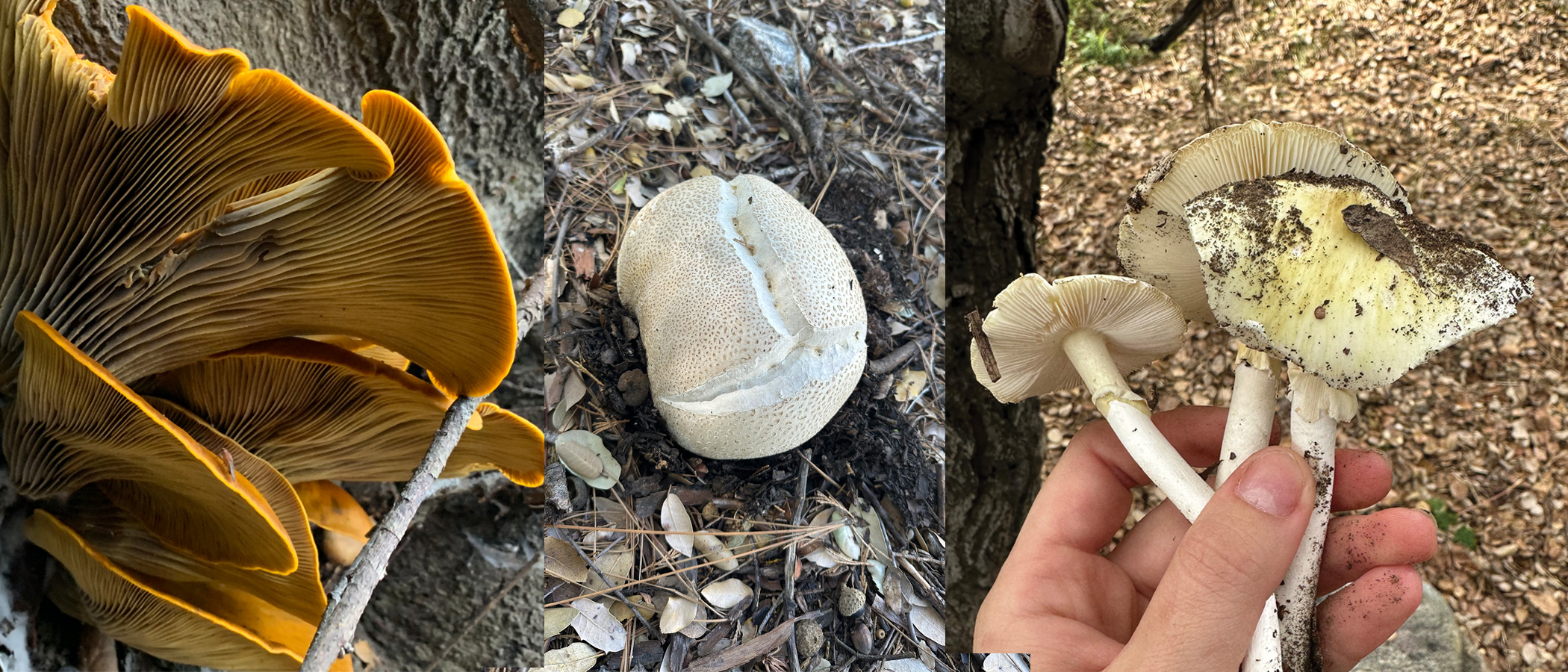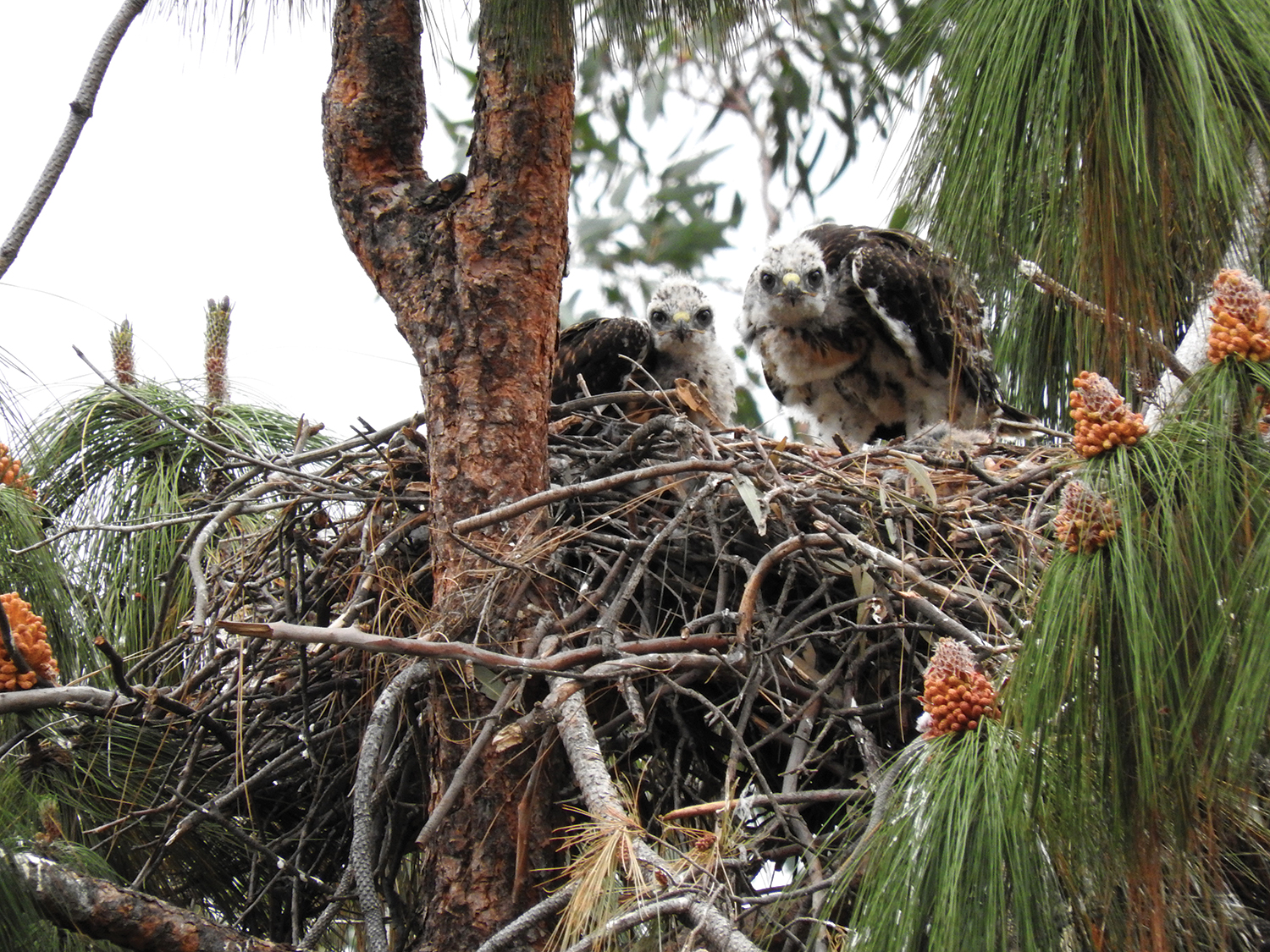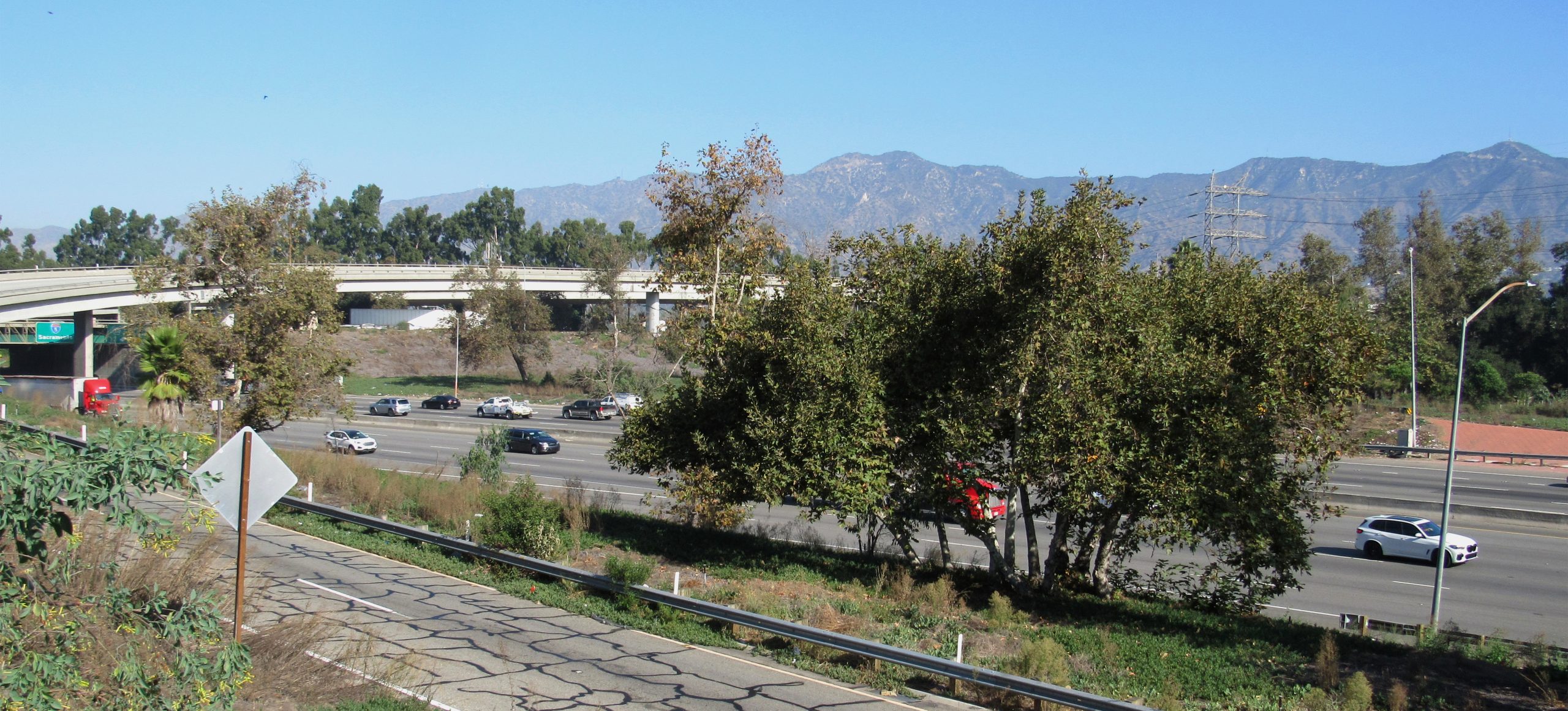
Whether you stroll in the grass or hike along a trail, you might notice the colorful and curious mushrooms that dot Griffith Park. These fascinating fungi come in countless shapes, sizes, and colors, each with its own story to tell. But what are these organisms, and how can we safely interact with them? I’ll guide you through the visible world of mushrooms and delve into the transformative processes happening beneath our feet.
What’s Out There?
Mushrooms, or fungi, are actually just the fruiting bodies of a much larger organism that lives underground. The mushrooms we see are much like seeing an apple on a tree. Fungi are fruiting bodies created with the goal of reproduction. The “tree” is a vast network of thread-like-tissue called mycelium that absorbs nutrients/water, but sometimes intertwines with tree roots for a symbiotic relationship.
You might encounter a variety of mushrooms on your hikes through the Park, including:
Edible Mushrooms: Such as puffballs or morels, which are sought after by chefs and foragers. (center image, above)
Poisonous Mushrooms: Like the infamous “death caps” and “destroying angels”, common under oak trees. Some mushrooms can cause serious harm, so it’s crucial to avoid consuming any mushroom unless you are absolutely sure of its identity. (right image)
Inedible but Interesting Species: These make up a majority of the mushies around us. They can be fascinating to observe, such as the bioluminescent Jack-o-lantern mushrooms, Omphalotus olivascens, which glow in the dark. (left image)
Where do I find them?
Mushrooms can be everywhere, but timing is crucial. These ephemeral fruiting bodies grow and disappear quickly, so it’s always a matter of being in the right place at the right time. Mushrooms need moisture, so they tend to be more abundant after rains. During long periods without rain, it’s still possible to locate mushrooms that are specialized to fog drips and sprinklers.
To find mushrooms, all you have to do is look around you. Some mushrooms have specialized relationships with certain trees. Oak trees have so many special relationships that they can be like an “X marks the spot” after a good rain.
Some mushrooms are decomposers, and decomposition happens all around us. If it decomposes, there’s a good chance that there is a specialized fungi for it. You can find a mushroom virtually anywhere if conditions are right.
Can I Touch It?
You can touch any mushroom! They need to be ingested to cause harm.
How Best to Observe
When you observe mushrooms in the wild, take a moment to appreciate their diverse ecosystems. Here are a few tips for a mindful experience:
Use a Field Guide: Bring a guidebook, even if you don’t know how to identify mushrooms yet, it will give insight into where/when to find certain mushrooms. Look for key features like cap shape, gills and habitat. A best choice for Southern Californians is the Field Guide to Mushrooms of Western North America (Davis, Sommer, and Menge). It uses a keying system that is unsurpassed.
Take Photos: Document your finds with photographs of the top and bottom, including the base. This allows you to study them later when they’ve disappeared.
Upload finds to iNaturalist: Upload your photos to the iNaturalist app for insight from experts and to potentially document your find. You never know when you might’ve found something uncommon, and the experts will appreciate the documentation.
Next time you venture into the woods, take a moment to look for mushrooms. Whether you’re admiring their beauty or pondering their role in the ecosystem, these incredible organisms are worth your attention. And remember, while the mushrooms above ground are enchanting, the hidden world of mycelium beneath is where the true magic lies. Happy hunting!
If you’re interested in learning more, consider joining a local mycology club; also FoGP is planning Mushroom Walks in early 2025, weather permitting! Stay tuned!
~Bat Vardeh is the founder of Foraging and Mushroom Hunting Women of SoCal and a member of the Los Angeles Mycological Society.



0 Comments